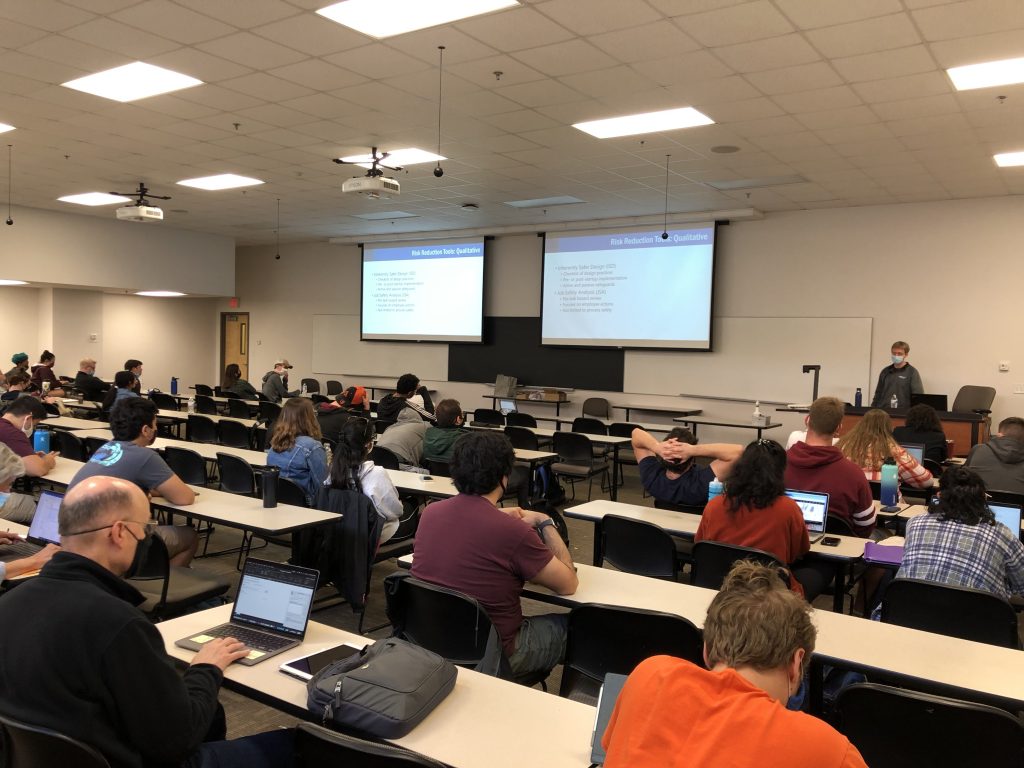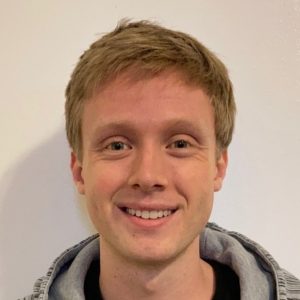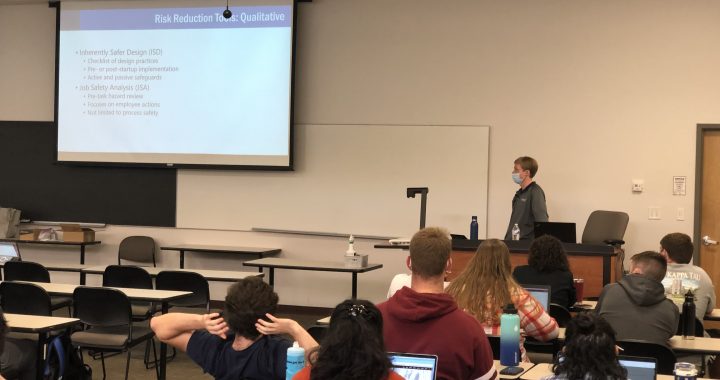Safety Engineer Ian Davis, recent guest-lecturer at Virginia Tech, talks about his passion for safety engineering


Safety Engineer Ian Davis
Safety Engineer Ian Davis recently guest lectured at his alma mater Virginia Tech Department of Chemical Engineering. Ian lectured a three-hour class on process safety for his former Chemical Engineering Senior Design Professor Dr. Y.A. Liu, whom he credits as his biggest champion throughout his time at Virginia Tech.
“Process safety is a topic that is underemphasized in most undergraduate engineering curriculums,” says Ian. “Of course, we’re biased at EnSafe, but keeping people safe is quite literally the most important aspect of any industry, so I was more than happy to give the students a crash course on safety in the chemical industry and beyond.”
Ian started his career in safety engineering in 2021 with EnSafe. We sat down with him recently to learn more about how he found his way into safety engineering.
EnSafe: What drew you to a career as a Safety/Occupational Health Engineer?
Ian: When I started college, I wasn’t truly convinced that I wanted to be an engineer, and I ended up choosing to study chemical engineering because I thought it was the “least worst” major (which is a generally bad way of making important decisions). I lucked out and ended up really enjoying the technical aspects of chemical engineering.
EnSafe: How did the transition from chemical to safety engineering happen?
Ian: When I went on co-op for a year in the oil and gas industry, I really enjoyed the strong safety and workplace culture. That’s when I knew I wanted a career in which I could help keep people safe, happy, and healthy. I didn’t think that an opportunity like that existed for someone with my background, but when I discovered EnSafe, I gladly proved myself wrong!
EnSafe: So, has safety engineering offered the opportunities you were hoping for?
Ian: I heard many times during my co-op year, “no two days are alike” but I never understood what everyone was talking about. Most of my days were pretty similar. At EnSafe I can honestly say that every day is truly different, and I’m excited about the work I haven’t even done yet.
EnSafe: Tell us about the most interesting project you’ve worked on so far?
Ian: Without a doubt, the most interesting project I’ve done at EnSafe was the emergency response at Mt. Olivet Cemetery in Chattanooga, Tennessee. The Diocese of Knoxville was exhuming the body of Father Patrick Ryan, who was a Catholic priest who died in the late 1800’s while helping the people of Chattanooga during the yellow fever epidemic. The exhumation was the first step in the process of beatification, and potentially sainthood for Father Ryan. EnSafe was called to clean up arsenic, which was the toxic embalming agent used to preserve the body. We dressed out in Level C HazMat gear to hand-clean the remains of Father Ryan for preservation and decontaminate the surrounding soil. Besides the sheer uniqueness and historical significance of the project, I learned scores about hazardous waste cleanup and disposal from the talented EnSafers who were guiding me through the process.
EnSafe: Sounds like you have some mentors here at EnSafe. Tell us more.
Ian: The perk of EnSafe’s small-company-feel is that you genuinely get close to your coworkers – it’s not small talk by the water cooler here. My mentors are serious about supporting and teaching me. Mike Palmer has gotten me involved in process safety management (PSM) work and emergency response training. Rich Heinzenberger has given me exposure to industrial hygiene work, which I was completely unfamiliar with when I first started. They both have encouraged me to not limit myself to any one discipline, and that has allowed me to work on a wide variety of projects. I’m greatly indebted to them both!
EnSafe: After your three-hour lecture at your alma mater, are you feeling a pull back to the classroom?
Ian: As with many other pleasant surprises at EnSafe, one of my passions lines up very well with one of our business lines: training. Although I’m still in the infancy of my own health and safety trainings, I am now certified in confined space rescue and will soon be certified in chlorine hazardous materials handling. After I gain more experience in those fields, I will eventually be able to conduct those trainings for our clients.
EnSafe: We hear you’ll be co-teaching a confined space rescue course with Mike Palmer in early 2022.
Ian: That’s right. These opportunities feel very full-circle for me, as I tutored student-athletes for four years during college and even wanted to become a teacher at one point, so taking the practical learnings from emergency response and teaching them to clients is exciting for me.
It’s exciting for us, too, Ian! Congratulations on your full-circle lecturing and training opportunities. The passion and creativity you bring to your work is the same our founders had in 1980, and it’s helping define the next generation of EnSafers.
